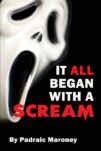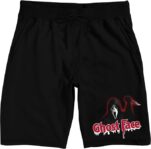The Movie References in Scream
One of the defining aspects of Scream is its ability to honor and connect with the horror classics that inspired it. Kevin Williamson, the writer behind the iconic slasher, openly shares his admiration for two films in particular: Halloween (1978) and Friday the 13th (1980).
In the introduction to the book adaptation of his screenplay, Williamson recalls the profound impact of seeing Halloween in theaters at just 12 years old:
“Halloween was my revelation. I already knew my love of movies bordered on obsession, but I had no idea just how fixated I was until I experienced Halloween. The movie terrified me beyond belief. I sat, white-knuckled, between Shelley and her mother. I vividly remember grabbing Shelley’s mother every time Michael Myers appeared.”
“Halloween was the film that opened my eyes.”
Williamson’s passion for Halloween is unmistakable throughout Scream. While the design of Ghostface’s mask wasn’t part of the original script, its eventual inspiration is evident. The bleached white mask of Michael Myers, famously modeled after William Shatner’s features, influenced the haunting simplicity of Ghostface.
Through clever nods, meta-commentary, and reverence for its predecessors, Scream carved its place in horror history while keeping the spirit of films like Halloween and Friday the 13th alive. Williamson’s script stands as both a tribute and an evolution of the genre he so deeply admires.




























